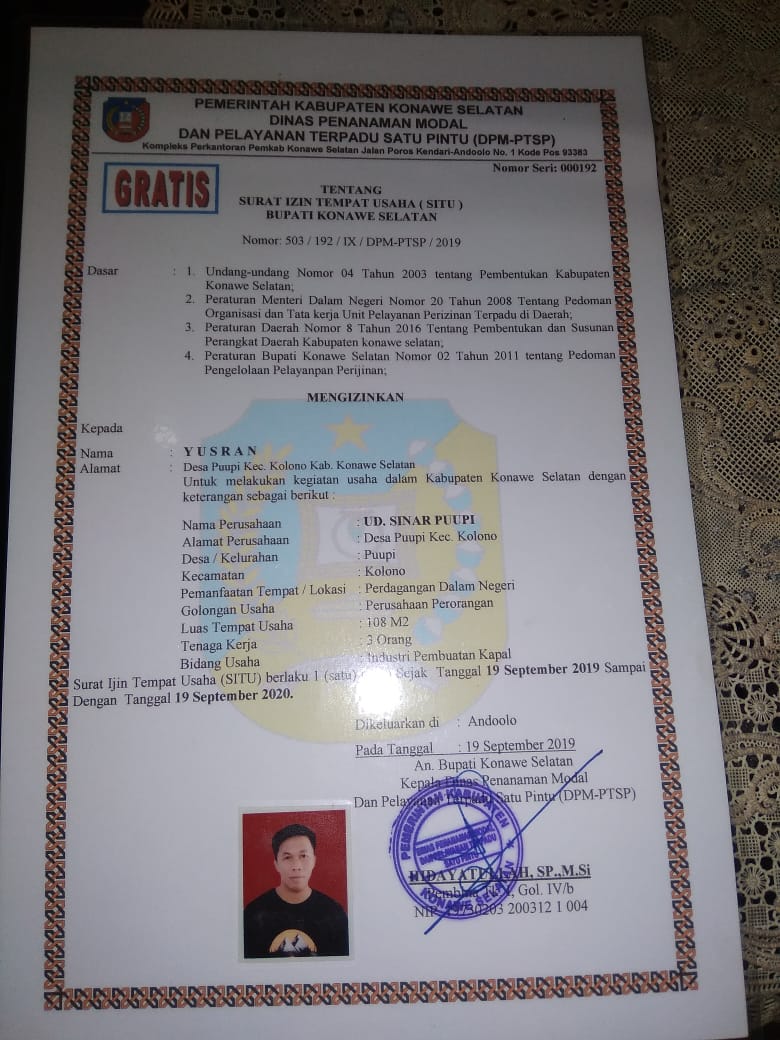
Project Details
How to Make a Phinisi Boat
phinisi Boat is made using teak and mahogany wood. Teak and mahogany wood are collected every 5th and the 7th of every month (the 5th has the meaning of sustenance that is already in hand and the 7th means always to get a fortune). The part of phinisi Boat that was first made was the body first. Merging wood does not use glue or nails. Combining wood to unite all parts of phinisi Boat using wooden pegs left over from making phinisi Boat. The wooden foundation of the phinisi Boat building must look to the northeast. Used 2 wooden foundation in making phinisi Boat. The front of the foundation symbolizes the man and is floated into the sea to resist evil and a symbol of readiness to make a living. The back foundation symbolizes the woman and is kept at home.
Sacrifice ceremony for the making of phinisi Boat is one where the splendor of phinisi was born. These traditional boat makers, namely: the people of Ara, Tana Lemo and Bira, who have traditionally inherited the marine traditions of their ancestors. Ritual ceremonies also still color the process of making this boat, a good day to look for wood usually falls on the fifth and seventh day of the current month. Number 5 (naparilimai dalle’na) which means fortune is already in the hands. While the number 7 (natujuangngi dalle’na) means it can always be sustenance. After getting a good day, the head mason called “retainer” led the search.
Before the tree is cut down, a ceremony is held to expel the wood dweller's spirit. A chicken is made as a sacrifice to be offered to the spirit. The type of tree that is cut is adjusted to the function of the wood. Cutting wood for the board is always adjusted to the direction of the vein so that its strength is guaranteed. After all the wood material is sufficient, then collected to be dried.
Laying down also uses a special ceremony. When cutting, the keel is placed facing Northeast. The front beam is a male symbol. While the back beam is interpreted as a symbol of women. After chanting, the part to be cut is marked with a chisel. Cutting done with a saw must be done at once without being allowed to stop. Therefore, the cutting must be done by people who are strong.
The cut off tip that has been cut off should not touch the ground. When the front beam has broken, the piece must be rushed to be discharged into the sea. The piece became a repellent and used as a figure of speech as a husband who was ready to go to sea to make a living. While the back of the beam is stored at home, is thought to be the wife of a sailor who faithfully waits for her husband to come home and bring sustenance.
Installation of keel-clamp board, accompanied by the Kalebiseang ceremony. Anjarreki ceremony is to strengthen the keel, followed by the preparation of boards from the bottom with the smallest width to the top with the widest size. The total number of base boards for phinisi boats is 126 sheets. After the terrace boards are arranged, proceed with the installation of the stern where the rudder rests.